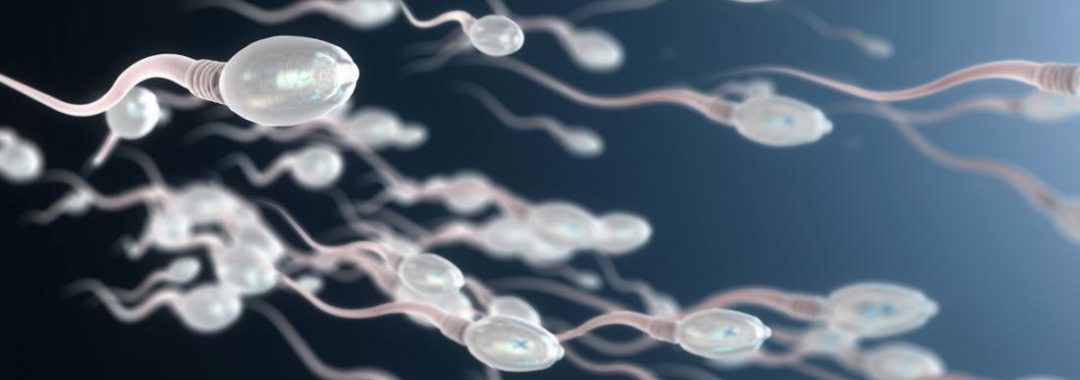There is a lot of misinformation with regards to facts about sperm health and their lifespan.
Typically, millions of sperm cells are produced in the testicles every day. During this time, many things can affect their formation and interfere with their quality and maturity.
It takes around 90-120 days for a sperm to become motile
From a tiny sperm cell it can take between 90-120 days before a sperm is fully mature. The sperm eventually develops a head and tail, so that its cells start to resemble the shape of a tadpole.
The head contains all of the DNA, or genetic material, and the sperm uses the tail to help it move. A sperm doesn’t reach full motility until it actually reaches the egg, where when touching the egg it creates a reactions that causes “super motility” to give it the final power to push inside the egg. This is called the acrosome reaction.
There has been lots of debate about the actual time it takes for a sperm to mature and become fully motile, but general consensus is that it will take somewhere between 90-120 days.
This is why it is important that men look after their health long prior to conception, because the sperm they ejaculate today was created around 90-120 days ago and what they did to their bodies at that time, will influence how healthy those sperm are.
A man’s lifestyle affects his sperm quality
So if a man had a poor diet, was drinking, smoking, had heaps of stress and goodness knows what, this can all have an impact of the maturing sperm and this can result in poor sperm quality and damage to the DNA of the sperm, which will then be carried onto his offspring, should the sperm be successful in fertilising an egg. This is why the couple need to be healthy prior to conception, not just the female.
Biology 101 tells us it take a sperm and an egg to make a baby, not just an egg. Sperm quality issues make up a big part of fertility issues and they can also be a big part of miscarriage issues too. I have spoken about this many times in previous posts. Up to 85% of miscarriage issues can be related to chromosomal and DNA factors related to poor quality sperm and this is often very much overlooked.
What factors impact on sperm health?
There are always many factors that can affect the sperm formation process and interfere with sperm quality and the DNA of the sperm.
Health and lifestyle factors
- Recreations drugs, medications or alcohol use
- job, or occupation
- tobacco use, or smoking in general (including recreational drugs)
- stress
- overheating the testicles (spas, saunas, bike riding)
- excess weight gain and excess body fat
- Trauma
- Bike riding (due to heat and trauma through the seat of the bike)
- Poor diet and nutrition
- Excess sugars and additives
- Preservatives and artificial colours and artificial sweeteners
Environmental causes
- exposure to industrial chemicals
- heavy metals
- radiation or X-rays
Medical reasons
- infection of the testicles
- cancer of the testicles
- swelling of the veins (varicoceles etc) that drain blood from the testicle
- hormone imbalances
- physical problems in the tubes that carry sperm through the reproductive system
- chromosomal or genetic disorders (such as Kleinfelters syndrome)
- certain medications
- surgery involving the pelvis, abdomen, or reproductive organs
How long do sperm live inside the female body?
There is always a huge misperception about how long sperm can survive outside the man’s body and when they enter into the female reproductive tract. Many women are told all manner of untruths of sperm lasting for weeks at a time. The truth is that sperm cannot survive for long once they are released.
Precisely how long they can survive depends on the environment that they are released into and how quickly the fluid surrounding the sperm cells dries up.
Sperm lifespan inside the female body
After ejaculation, sperm may be able live inside the female body for several days, but that is dependent on many varying factors once they enter a woman’s body. To be honest, most of the 300-500 million sperm are dead with an hour. That is a fact.
The fluid in a woman’s reproductive tract, especially the fallopian tubes, has all of the nutrients that sperm need for their survival during that time. But while the woman’s body can help sperm on their way to meet the egg, it can also hinder it their survival as well.
An egg has 24 hours to be fertilised, otherwise it dies
But even so, sperm really only have about 24 hours to fertilise an egg once it is released. After 24 hours, if the egg isn’t fertilised it will die, so really, it doesn’t matter how long the sperm can survive for if the egg has already died.
Poor sperm have to contend with many things when they enter a woman’s body. A woman’s vagina is coated in acids, to protect her from infections and bacteria, but it is also lethal to sperm. This is why within minutes and hours, most of the 300-500 million sperm that set off in search of the egg will be dead. Only a few million will survive to swim through cervix.
Climax helps with getting sperm into the uterus
A woman’s body can help to get the sperm going up into to the cervix though. Through climax (orgasm) contractions are created that can help pull sperm up and into the uterus. Through these contractions the cervix is dipped time and time again into a pool of waiting sperm and this then helps carry the sperm up into the second stage of their journey through the uterus and then up into the tubes.
Only a small number is sperm survive the journey
Once inside the female reproductive tract, the sperm cells must swim through the cervix and into the uterus to reach the fallopian tubes and then on to find the female egg. It is a very long journey for sperm to make and very few survive. Many get lost inside the uterus and some are attacked by the woman’s immune system along the way. By the time the survivors make it to the fallopian tubes to have a rest, there will only be less than 20 or more left to make the final journey.
After the sperm have a rest in the tubes and actually feed off some of the nutrients in the tubes many more will die, or be lost inside the tubes and by the time the final sperm reach the egg, there will be less than 10 single sperm left. Only one may then go on to fertilise the egg and an embryo is then started to be created.
All men should have there sperm quality tested
This is why all men need to have their sperm quality checked by a proper andrology lab and some men will need further testing of the DNA (DNA fragmentation analysis) and further genetic testing if the semen results are poor.
This should all be done prior to trying to conceive, as 50% of fertility issues are related to men. If a man has any of these risk factors, he should try to change them at least 3-4 months before trying to conceive, since that is how long it takes for sperm to fully mature. Some men may need longer than this, depending on what is causing their sperm to be of poor quality.
I will discuss some more myths and facts around sperm and what the most important parameters are to look at with sperm, in some later posts.
Regards
Dr Andrew Orr
-Women’s and Men’s Health Advocate
-No Stone Left Unturned
-The International Fertility Experts









